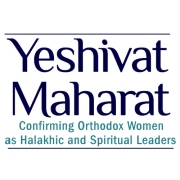May 1st marked 9 months of living in Israel. I’m not totally sure how that happened, but it did! So, since I missed the 6 month recap, here is one that covers both my second and third quarter here.
Living:
We adapted to our small space but are looking at apartments to move closer to Pardes and the synagogues we have found we liked and others we are told we will like.
Learning:
Without a shadow of a doubt, this is the best thing about our Israel experience. We have both been amazed at how much we have been able to learn in these past few months and how far we have come in our skills. Needless to say, we are also aware of how much more we have to go!
We will both be Fellows at Pardes next year, so there for sure another year of solid learning in our future.
Exploring:
Ya, we still haven’t really done that. *crosses fingers* Hoooopefully while we have some down time this summer we will be able to do more of this!
Community:
We have embraced that the reality of our experience is that our learning communities are really our primary community and we have made some amazing friends. Also, the sense of community here is much different than in the US.
We have found two synagogues which we really enjoy and hope to move closer to them, as well as some others in that area which we here will help us feel more connected.
Food:
So, apparently, I do actually like hummus and tahina. Thats probably the biggest thing to share food wise. We are trying to get back to a simpler and cleaner diet, with the abundance of fresh produce its really quite silly not to!
We have also deduced that the secret to Marzipan’s deliciousness must be crack. It is the only explanation for their addictive tendencies. 😉
Safety:
Amud Annan (Operation Pillar of Defense) rocked our world for a few weeks with its tensions, sirens, and uncertainty. However, the cease fire came quickly and lasted solidly for a few months. Even now as it has been violated and the rock-throwing, stabbing, etc incidents of terror have risen in the areas near the borders, there is still a sense of calm.
As such, our largest safety concern has again become the simple act of being pedestrians.
Surprising realizations:
There are only two season in Israel: Rainy season from Sukkot to Pesach, and mosquito season from Pesach – Sukkot.
Kitniyot on Pesach is awesome. (See the post about that for details.)
The “settlements” don’t feel like settlements so much as suburbs…..
We think about being homesick much less often, but when it does come it is just as intense.
Rak b’yisrael (Only in Israel):
Rockets fall across the country and people continue on about their daily lives, but snow is imminent and the entire city shuts down.
National holidays which should fall Saturday night/Sunday get pushed back a day so that people do not begin their preparations on Shabbat.
Busses wish you happy holidays.
There is no customer service and people are rude, but in a moment of need someone is always available to help.
Do you have other things you want to know about? Feel free to ask in the comments! 🙂





